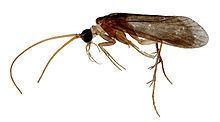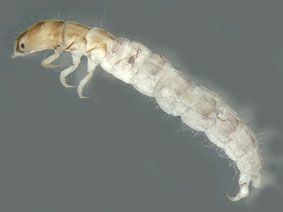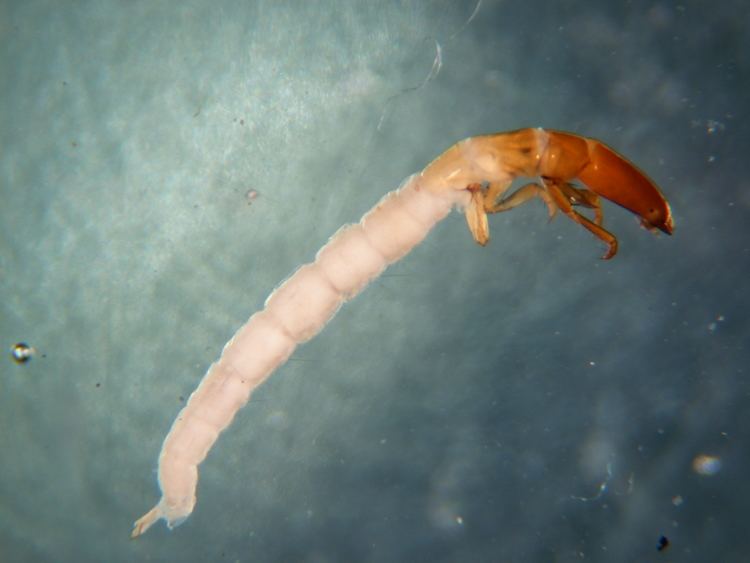Superfamily Hydropsychoidea Rank Family | Suborder Annulipalpia Scientific name Ecnomidae Higher classification Hydropsychoidea Order Caddisfly | |
 | ||
Similar Caddisfly, Psychomyiidae, Polycentropodidae, Philopotamidae, Hydroptilidae | ||
Distribution
The Ecinomidae have a Gondwanan distribution, except one genus, which also is present in Oriental and Palearctic regions.
Morphology

The adult is a mostly small to medium-sized caddisfly with a wingspan of 6–18 mm (0.24–0.71 in), with dull grayish-brown mottled wings. Ocelli are absent. The maxillary palp is five-segmented. The apical segment is flexible. The antennae are, at most, as long as the forewing. Forewing R1 is usually forked at the apex; the discoidal and median cells present and closed. The female abdomen terminates either flat out or with an elongated ovipositor.

The larva is small to medium-sized 5–10 mm (0.20–0.39 in) long. The head and all thoracic nota are sclerotised. The prolegs on the abdomen are highly formed with large anal claws terminal.
Behavior and ecology

The Ecnomidae larval stage, like most trichoptera larvae, is spent completely in fresh water. They are predatory, but some genera feed also on algae and detritus. They construct fixed tubes, retreats of silk, on logs or rocks. Permanent ponds and lakes or slower-flowing waters is suitable habitat for Ecnomidae larvae.
Taxonomy and systematics

The Ecnomidae taxonomy has been problematic, Ecnomidae was first described (Ulmer 1903) as a subfamily of Hydropsychidae, and later as a subfamily within Psychomiidae. The Ecnomidae family is now accepted as monophyletic beside its sister-group Polycentropodidae. The Ecnomidae contain at least 9 genera with the most diversity found in the genus Ecnomus. Currently, a total of 375 species are described. In recent years, several new species has been discovered, mainly from the Oceania region. Other phylogenetically distinct genera exist which have not been scientifically described yet.
Genera

All Ecnomidae genera are restricted to the Southern Hemisphere except the genus Ecnomus, which is widely distributed. This means the group of may have a Gondwanan origin.
